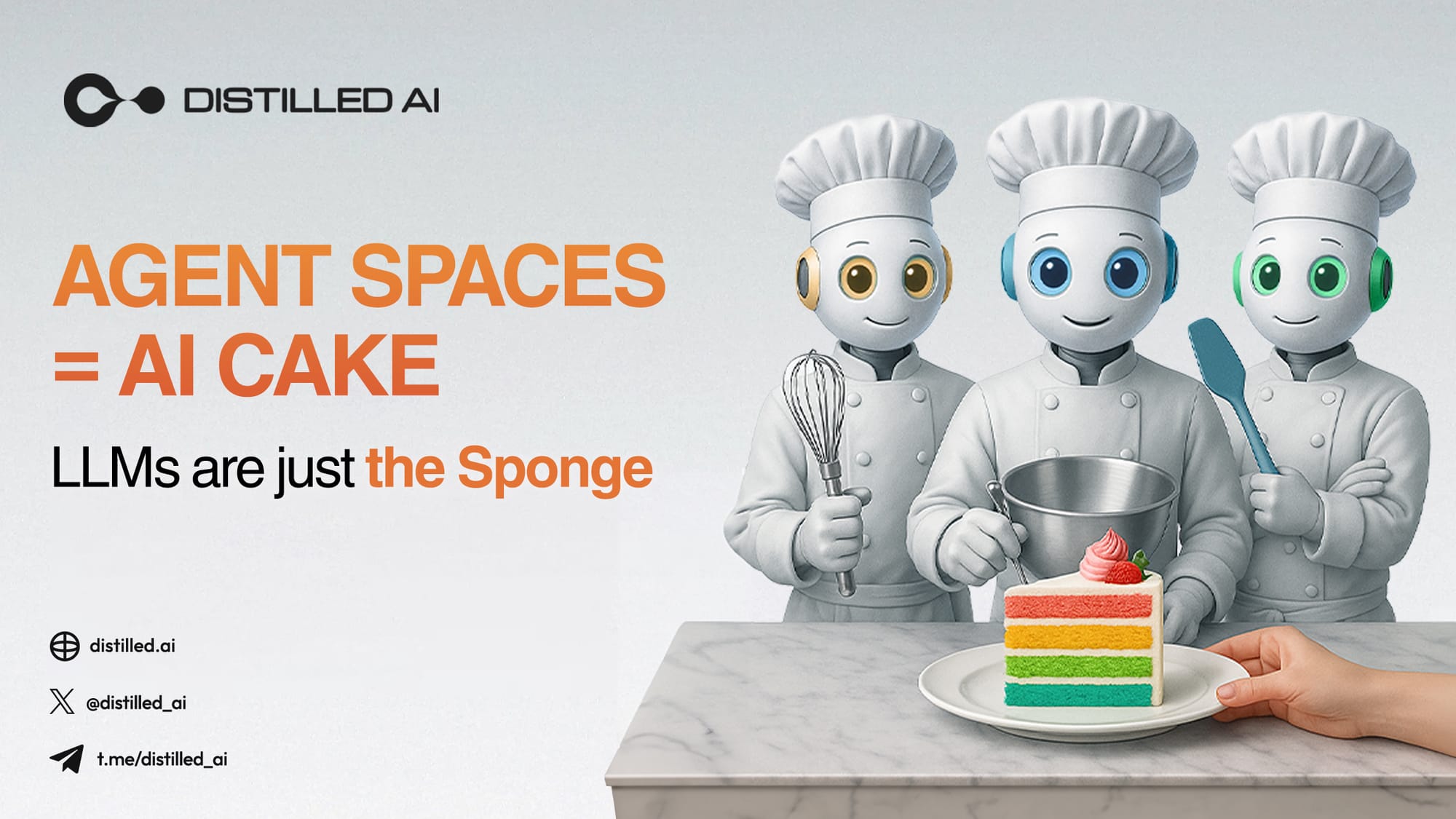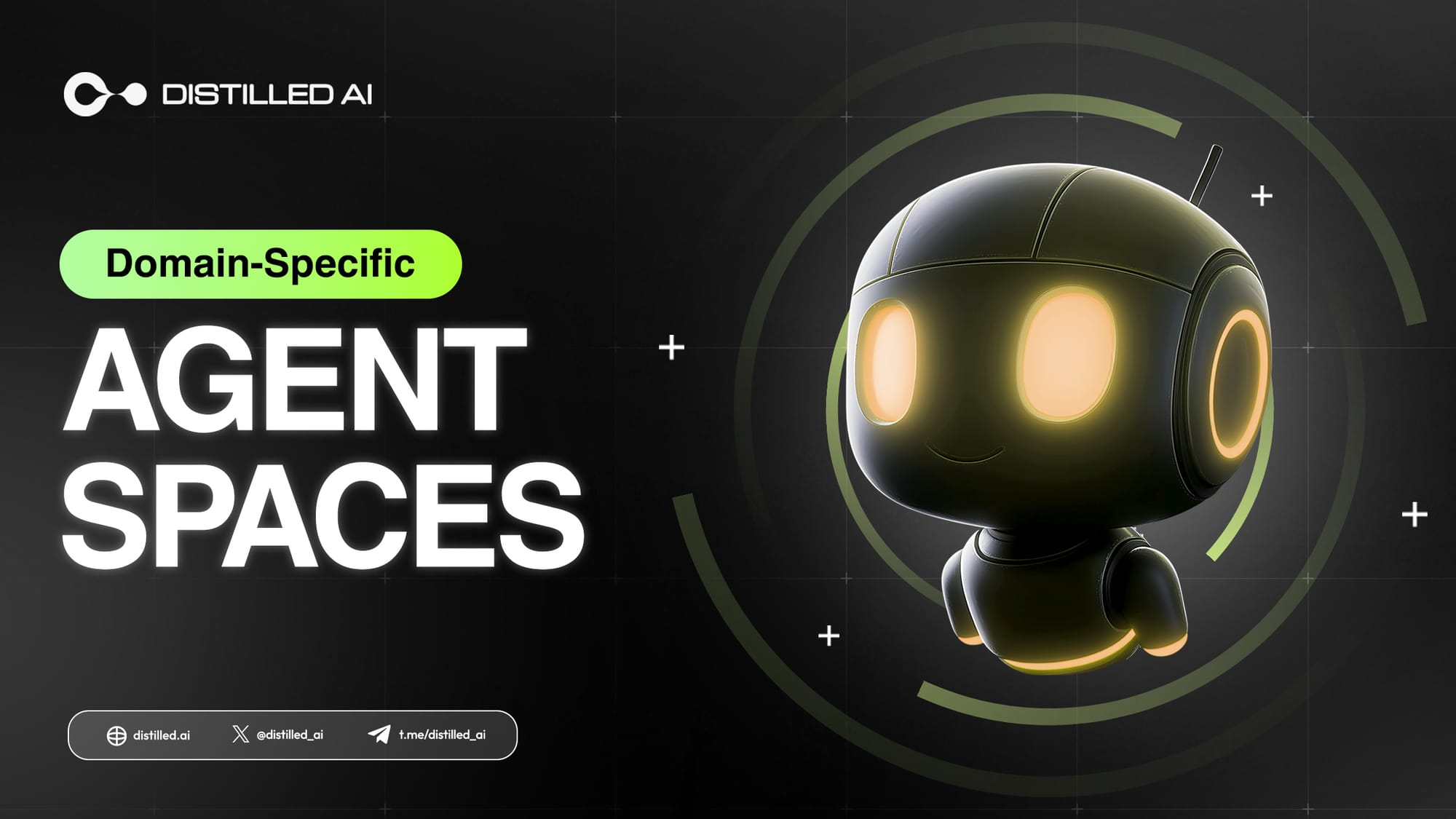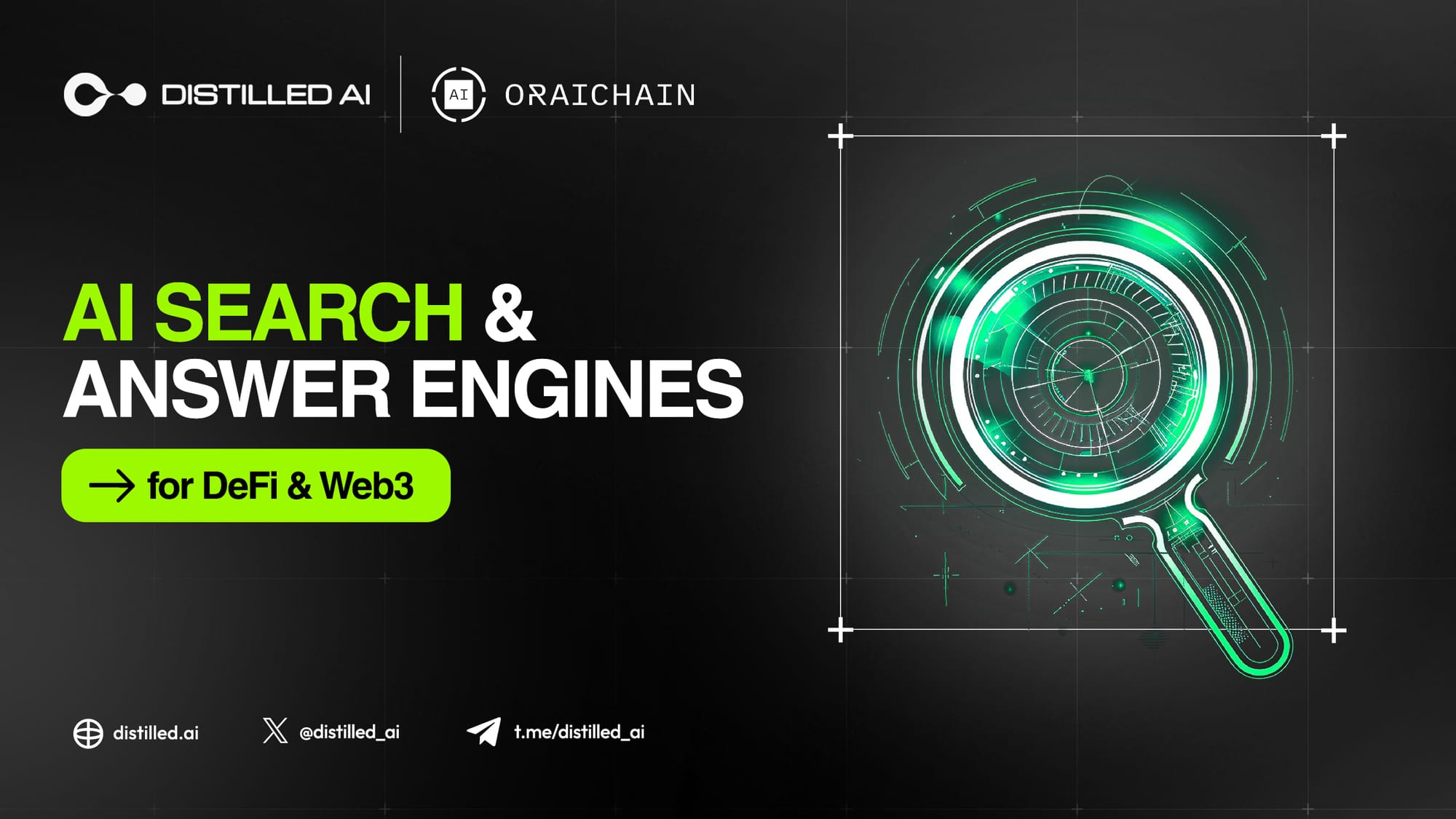- Our AI Agents
- About us
- Blog
- DeveloperComing soon
- Docs
- Enter MESH App
 Back
Back
LLMs Are Just the Sponge: Building the Full AI Cake with Agent Spaces
MAY 14, 2025
From LLMs to AI systems is a long journey. Just like a sponge alone doesn't make a cake, LLMs alone can't create the rich, layered AI experiences we rely on today. This article explores how the AI Cake is formed—how modular systems, orchestrated workflows, and agent spaces bring everything together. And more importantly, what Distilled AI is aiming to build: the infrastructure that transforms these ingredients into a scalable, composable AI economy.
The Secret Recipe
When most people interact with AI systems like ChatGPT, they see impressive outputs: thoughtful responses, summaries, even creative ideas. It’s easy to assume that a great LLM (Large Language Model) is all that’s needed to make these systems work. But that’s only part of the story.
At its core, the LLM is like the sponge of a cake—essential for structure, but far from complete on its own. LLMs operate with what’s called a single residual stream—a design used by most Transformer-based models. This means they process one sequence of thought at a time, without memory, coordination, or multitasking.
To create the full AI experience, LLMs are surrounded by supporting modules:
- Context retrieval tools,
- Memory systems,
- Workflow orchestrators,
- And of course, the user interface that ties it all together!
These are the frosting, layers, and decorations that transform a plain sponge into a yummy cake.
Just like early computers relied on single-core processors, today’s AI systems are limited by single-residual streams. To scale AI into more adaptive and collaborative workflows, we need new infrastructure—a way for multiple agents and humans to interact, share memory, and coordinate seamlessly.
From Sponge to Layered Cake: The Need for System Architecture
Agent spaces are like the operating systems for AI agents, enabling modularity, composability, efficiency, and scalability, with GUI to interact with human.
Here's how the layers stack up:
Connectivity & Interoperability (Standards like MCP & A2A):
Agents need to communicate and access context.
- MCP (Model Context Protocol) connects agents to external data and tools, ensuring consistent context retrieval.
- A2A (Agent-to-Agent Communication) enables agents to exchange messages and collaborate across platforms.
Coordination & Context Sharing (Orchestration & Memory):
Orchestration layers manage workflow coordination across agents, while memory modules allow agents to store and retrieve knowledge and maintain interactive flows—similar to how an operating system manages tasks, data, and sessions.
Examples:
- RAGs (Retrieval-Augmented Generation): Combine LLMs with external databases to fetch relevant information on demand.
- CrewAI and Autogen: Provide multi-agent orchestration, allowing agents to take on specific roles and delegate tasks.
- Other tools like LangGraph, Mem0, and Magentic-one support stateful memory flows and agent collaboration.
Scalability & Flexibility:
Just as multi-core processors scale with more cores, agent spaces scale with more agents. New agents or tools can be plugged in without disrupting the system.
Efficiency:
Specialized agents share the workload, executing in parallel and reducing compute waste.
Why Web3 Investors Should Care About the Cake
- Decentralization:
Agents operate peer-to-peer, using standardized protocols to coordinate autonomously—aligning with Web3 values. - Composability:
Like DeFi protocols stack, agents in an agent space combine and recombine, opening new markets for intelligence-as-a-service. - Scalability & Efficiency:
Agent spaces scale like layered solutions in blockchain—unlocking greater throughput and lower costs.
Let’s Bake the Future
The journey from LLMs to full AI systems is like baking a cake: the sponge (LLM) is just the base. The real magic happens when you add the layers, frosting, and decorations—the modules and agent spaces that make AI scalable and adaptable.
At Distilled AI, we are contributing to this emerging infrastructure, building tools and frameworks that help bring agent spaces to life. But this is much bigger than any one project. Supporting agent space infrastructure today—whether through ecosystem standards, modular frameworks, or protocol development—is like investing in cloud computing before AWS or Layer 2 protocols before DeFi exploded.
This is the foundation for the next AI-powered Web3 economy. Let’s bake up a storm—because every great summer needs a showstopping cake!


Thank you!
Read more articles

One Size Fits None: Why Domain-Specific Agent Spaces Win
As Agent Spaces begin to define how humans and AI agents collaborate, a critical design choice emerges: why not build a single Agent Space that does everything? A universal platform might sound efficient, but in practice, specialization beats generalization when solving hard problems. This article makes the case for domain-specific Agent Spaces—where modularity, focus, and community expertise create compounding value that no "do-everything" platform can match. Domain Specialization: The Compet
MAY 14, 2025

AI Search and Answer Engines: The Future of Discovery
A single news item—Apple exploring AI search in Safari—yesterday wiped ~$150 billion off Alphabet's market value overnight. Big Tech is racing to embed AI-driven answers directly into browsers, search engines, and smart devices. Read on to see why specialized AI search for vertical domains like DeFi and Web3 is no longer optional; it's essential. The Shockwave Moment On 7 May 2025 Bloomberg broke news that Apple is “actively looking at” plugging OpenAI, Perplexity AI and other generative-sear
MAY 14, 2025

 Share article
Share article